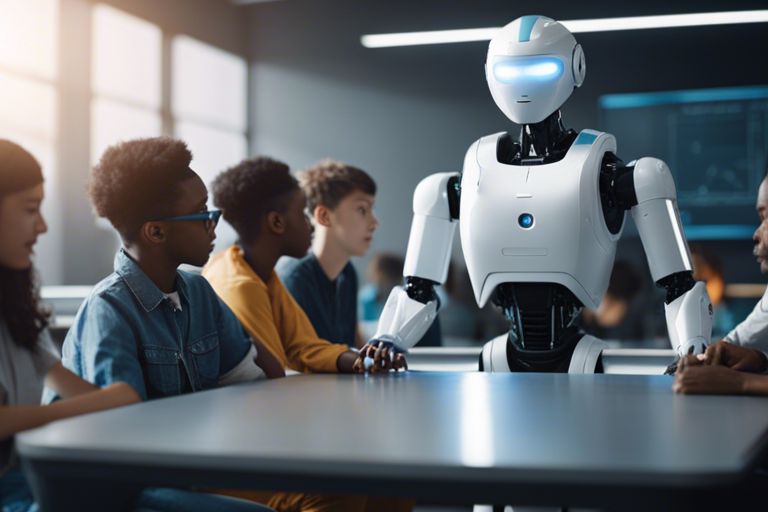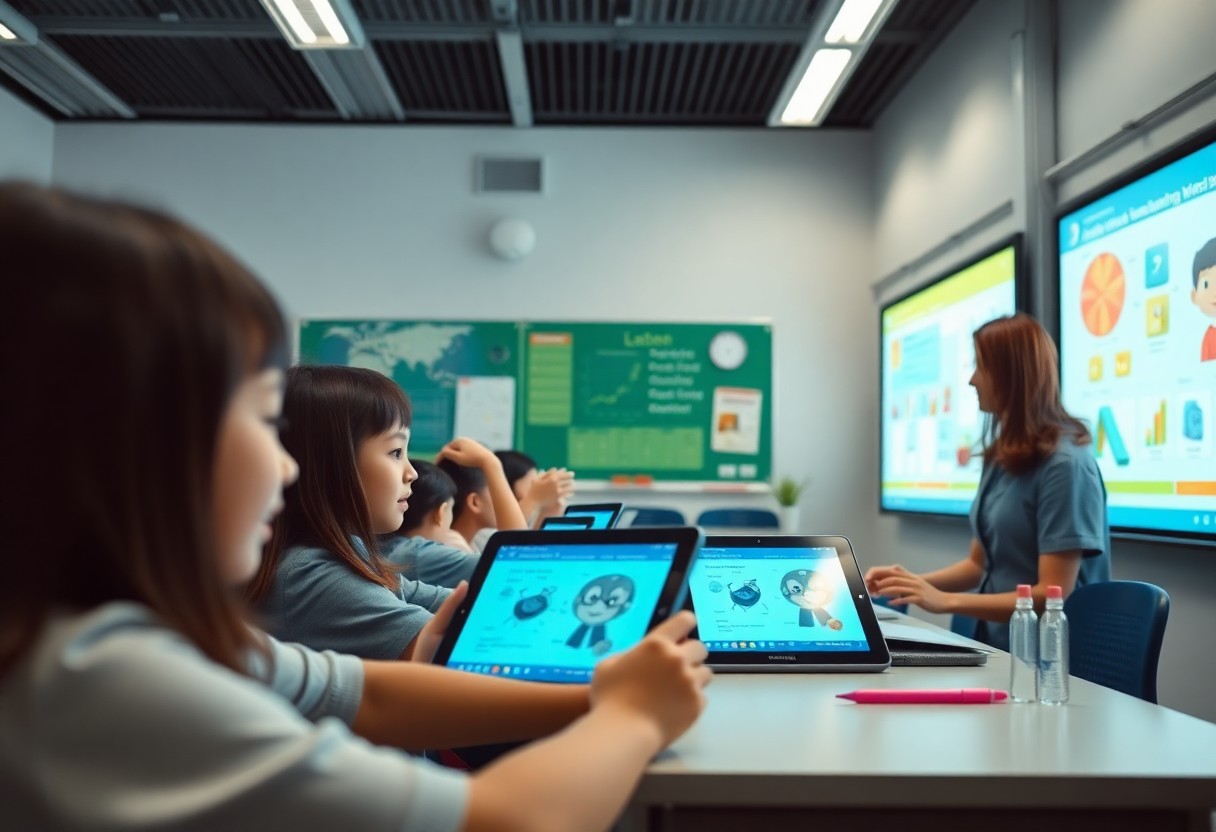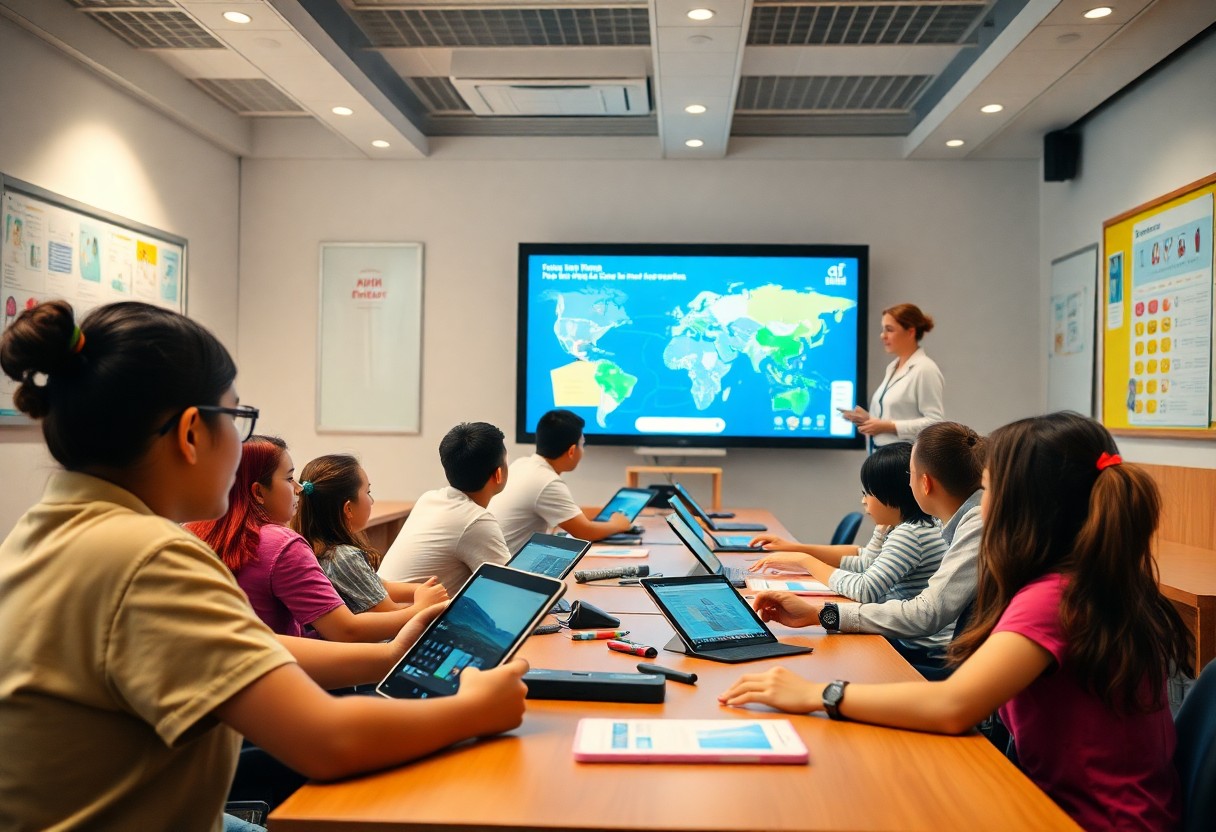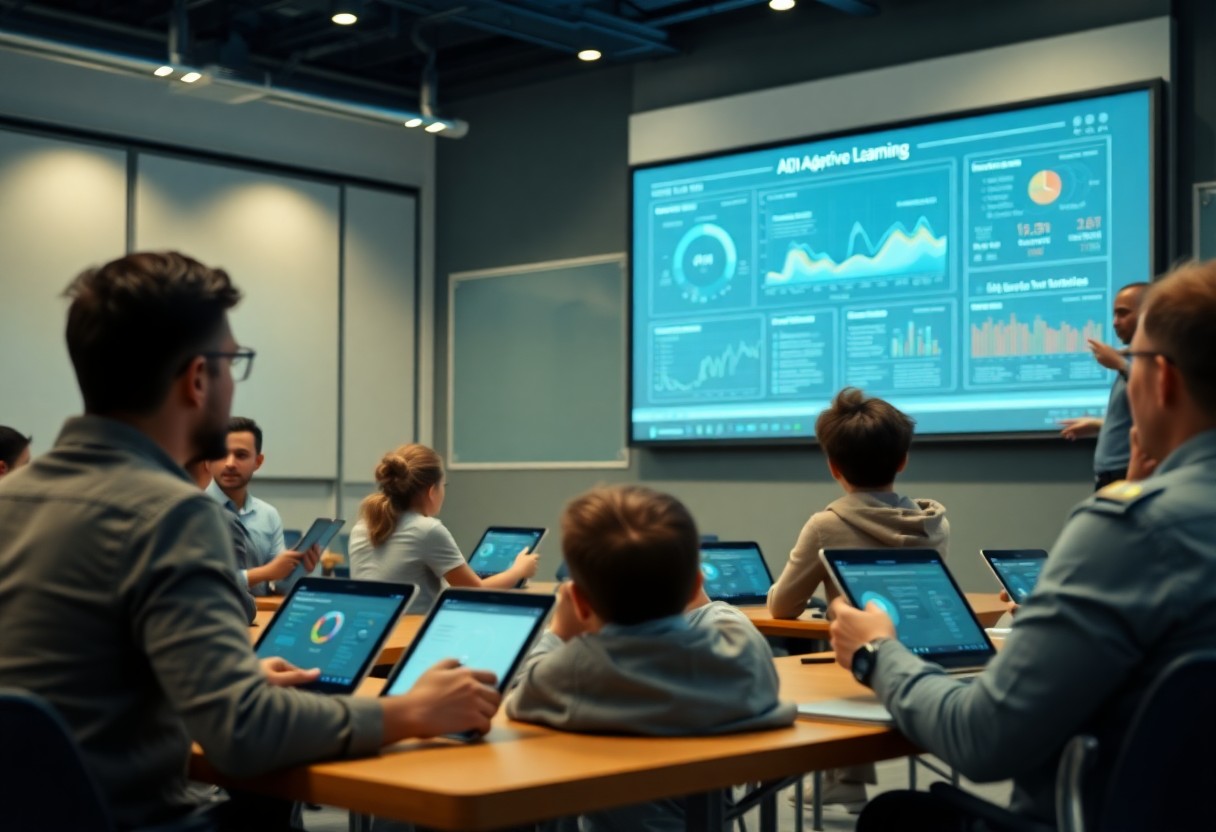Technology is revolutionizing education by breaking down barriers and making learning accessible to all. With the help of AI (Artificial Intelligence), educational tools are becoming more personalized, adaptive, and inclusive. Students from diverse backgrounds can now access quality education tailored to their individual learning needs. This transformation in education is empowering learners worldwide, bridging the gap between traditional and modern learning methods. AI is reshaping the future of education, making it more equitable and accessible for all.
The State of Education Today
Limited Accessibility
For many individuals around the world, access to quality education remains a significant challenge. Financial barriers often prevent students from pursuing higher education, while geographical limitations restrict access to schools in remote areas. Additionally, physical disabilities can pose obstacles to learning in traditional educational settings.
Disparities in Learning Outcomes
Any discussion on the state of education today cannot ignore the stark disparities in learning outcomes among students. Factors such as socioeconomic status, access to resources, and the quality of teaching play a crucial role in determining the success of a student. These disparities widen the educational gap, creating further challenges for marginalized communities.
A deeper analysis reveals that students from disadvantaged backgrounds often face limited access to technology and personalized learning experiences, which are key drivers of academic achievement in the digital age. Addressing these disparities is crucial to ensure an inclusive and equitable education system for all.

The Rise of AI in Education
Early Adoption
Little by little, artificial intelligence (AI) has been making its way into educational institutions around the world. Educators and administrators have started to see the potential of AI in improving student learning outcomes and streamlining administrative tasks. Early adopters have been experimenting with AI-powered tools to personalize learning, provide real-time feedback, and assist students with disabilities.
Rapid Advancements
Adoption of AI in education has been growing rapidly in recent years. From virtual tutors and chatbots that offer round-the-clock assistance to AI grading systems that provide instant feedback on assignments, the possibilities seem endless. This surge in AI advancements is transforming the way students learn and teachers teach, creating a more interactive and personalized educational experience.
Personalized Learning Experiences
Some of the most significant advancements in education due to AI technology are seen in personalized learning experiences. By utilizing AI algorithms, educators can tailor their teaching methods to meet the unique needs and learning styles of each individual student. This customization allows for a more efficient and effective learning process, ultimately leading to improved academic outcomes.
Adaptive Assessments
Any comprehensive educational program includes regular assessments to gauge student understanding and progress. AI-powered adaptive assessments take this a step further by adjusting the difficulty level of questions based on the student’s responses. This ensures that students are continually challenged at an appropriate level, promoting growth and mastery in their areas of study.
Tailored Instructional Content
Tailored instructional content is another key aspect of personalized learning experiences made possible by AI. Through sophisticated algorithms, AI can analyze a student’s performance and preferences to recommend specific learning materials that cater to their individual needs. By presenting relevant and engaging content, students are more likely to stay motivated and retain information effectively.
The ability to provide tailored instructional content not only enhances the learning experience for students but also lightens the load for educators. With AI handling the task of personalizing material, teachers can focus more on guiding and mentoring students, creating a more enriching educational environment.
Intelligent Tutoring Systems
Now, let’s explore the world of Intelligent Tutoring Systems (ITS) and how they are revolutionizing the way we learn. ITS is a form of artificial intelligence that provides personalized instruction to students, catering to their individual needs and learning pace. One of the key features that sets ITS apart is its ability to adapt to the student’s responses in real-time, creating a dynamic and interactive learning environment.
Real-time Feedback
The real-time feedback provided by Intelligent Tutoring Systems is invaluable for students. Through advanced algorithms and machine learning, ITS can analyze a student’s performance instantly and offer personalized feedback to help them improve. This immediate response not only enhances the learning experience but also enables students to track their progress effectively.
Human-like Interaction
Tutoring in the traditional sense often involves one-on-one interaction with a human tutor. However, with ITS, students can experience a more personalized and human-like interaction with the system itself. These systems are designed to simulate natural conversations and adapt to the student’s learning style, making the learning process more engaging and effective. Additionally, ITS can provide round-the-clock assistance, breaking the barriers of time and accessibility for students who may not have access to in-person tutoring.
Based on the advancements in these systems, it is clear that Intelligent Tutoring Systems are paving the way for a more inclusive and accessible education system. By providing real-time feedback and human-like interaction, ITS is transforming the learning experience for students around the globe.
Accessibility Features for Diverse Learners
Your journey towards inclusive education begins with understanding and implementing the various accessibility features that AI technologies offer. These features are designed to break down barriers and provide equal learning opportunities for all individuals, regardless of their backgrounds or abilities.
Natural Language Processing for Language Barriers
One of the significant barriers to education is language proficiency. AI tools equipped with Natural Language Processing (NLP) capabilities can translate educational materials into multiple languages, making them accessible to a diverse range of learners. NLP can also assist in real-time language translation during live lectures or discussions, ensuring that language is no longer a hindrance to learning.
Multimodal Interfaces for Disability Support
Features like multimodal interfaces are revolutionizing the way students with disabilities engage with educational content. These interfaces combine various modes of communication, such as text, audio, and visuals, to cater to different learning preferences. The flexibility of multimodal interfaces provides personalized learning experiences, breaking down traditional barriers faced by students with disabilities.
Virtual Learning Environments
Many educational institutions are turning to virtual learning environments powered by AI to make education more accessible to all. These platforms offer innovative ways for students to engage with course material, collaborate with peers, and receive personalized feedback.
Immersive Simulations
With immersive simulations, students can step into virtual worlds where they can apply theoretical concepts in practical scenarios. These simulations provide a hands-on learning experience that is particularly beneficial for subjects like science, engineering, and healthcare. Students can experiment, make mistakes, and learn from them in a safe environment, ultimately enhancing their understanding and retention of complex ideas.
Interactive Collaborative Tools
An array of interactive collaborative tools such as virtual whiteboards, group chat features, and real-time editing capabilities are transforming the way students collaborate with classmates and instructors. These tools encourage active participation and foster peer-to-peer learning, creating a more engaging and interactive learning experience.
Immersive simulations and interactive collaborative tools are revolutionizing the way education is delivered, breaking down barriers and providing students with access to high-quality learning experiences regardless of their geographical location or physical limitations.
AI-driven Content Creation
Once again, artificial intelligence is revolutionizing the way we approach education with its ability to create tailor-made content for individual students. AI algorithms can analyze data on students’ learning patterns, preferences, and areas of struggle to generate personalized educational materials. This customization ensures that students receive content suitable for their needs, making learning more effective and engaging.
Automated Grading and Feedback
To further enhance the learning process, AI-driven content creation includes automated grading and feedback systems. These systems enable instant assessment of student work, providing detailed feedback to help students understand their mistakes and improve. By automating the grading process, educators can save time on repetitive tasks and focus more on guiding and supporting their students.
Dynamic Curriculum Development
Grading and feedback are crucial components of dynamic curriculum development, where AI continuously analyzes student performance data to adapt and update the curriculum in real-time. This dynamic approach allows educators to address learning gaps promptly and adjust teaching strategies to optimize student outcomes. By personalizing the curriculum based on individual progress and needs, AI is helping to create a more inclusive and effective educational experience for all students.
Teacher Support and Enhancement
For educators, artificial intelligence (AI) is proving to be a valuable ally in the quest for more effective teaching methods. By providing personalized support and enhancing the overall teaching experience, AI is revolutionizing the way teachers approach their craft.
AI-assisted Lesson Planning
To assist teachers in creating engaging and tailored lesson plans, AI analyzes vast amounts of data to identify student learning patterns and preferences. By offering insights and suggestions based on this information, AI streamlines the lesson planning process, allowing teachers to allocate their time more efficiently and effectively.
Professional Development Opportunities
Planning professional development opportunities can be a challenging task for educators, especially with limited resources and time constraints. However, AI can help bridge this gap by offering tailored training programs based on individual teacher needs and areas for growth. By utilizing AI-powered platforms, educators can access a wide range of resources and workshops, enhancing their skills and knowledge in a more efficient and convenient manner.
For instance, AI can recommend specific courses or workshops to teachers based on their performance evaluations or areas of interest, ensuring that professional development opportunities are relevant and impactful. This personalized approach not only benefits individual teachers but also contributes to the overall improvement of the education system.
Overcoming Infrastructure Barriers
All around the world, various infrastructure barriers have hindered access to quality education. However, advancements in artificial intelligence (AI) have paved the way for innovative solutions to break through these barriers. Through the development of AI-powered tools and technologies, education is becoming more accessible to individuals regardless of their geographic location or economic status.
Mobile Learning Solutions
The rise of mobile learning solutions has been a game-changer in making education more accessible. With mobile devices becoming increasingly prevalent globally, AI-powered apps and platforms enable students to access educational content anytime, anywhere. These solutions cater to different learning styles and preferences, providing personalized learning experiences for users. Mobile learning has the potential to reach learners in remote areas with limited access to traditional educational resources, leveling the playing field in education.
Low-bandwidth Accessible Platforms
Barriers such as poor internet connectivity have long been a challenge for delivering online education. However, AI has enabled the development of low-bandwidth accessible platforms that optimize content delivery even in areas with limited internet access. These platforms use AI algorithms to streamline data transmission and ensure seamless learning experiences for users with slow or unstable internet connections. By overcoming the constraints of poor connectivity, low-bandwidth accessible platforms are expanding educational opportunities to underserved communities.
Learning is no longer restricted by traditional infrastructure limitations, thanks to the innovative solutions driven by AI. As technology continues to advance, we can expect even more creative approaches to breaking down barriers and making quality education accessible to all.
Ensuring Equity and Inclusion
Despite the potential of AI to revolutionize education and make it more accessible, there are challenges that need to be addressed to ensure equity and inclusion for all individuals.
Addressing Bias in AI Systems
To ensure that AI systems are fair and unbiased, developers and researchers need to actively work towards identifying and mitigating potential biases. Unaddressed biases in AI systems can perpetuate inequality and discrimination, particularly in educational settings where access to quality resources and opportunities can significantly impact a student’s outcomes. By implementing regular audits, diverse data sets, and inclusive design practices, we can improve the accuracy and fairness of AI technologies in education.
Cultural Sensitivity in Educational Content
Any AI-driven educational content must also prioritize cultural sensitivity to cater to diverse learners from various backgrounds. Understanding the cultural nuances and specific needs of different communities is imperative to creating inclusive and effective educational materials. By incorporating diverse perspectives, languages, and cultural references, AI can enhance the learning experience for all students, regardless of their background.
Addressing Concerns and Challenges
Job Displacement and Augmentation
To address concerns about job displacement due to AI in education, it is important to recognize that while some tasks may be automated, new roles and opportunities are also created. With the integration of AI technology in education, teachers can focus more on personalized instruction and mentorship, fostering critical thinking and creativity in students. Additionally, AI can augment teachers’ capabilities by providing valuable data insights to help tailor educational content to individual student needs.
Data Privacy and Security
One concern surrounding AI in education is data privacy and security. As AI systems collect and analyze vast amounts of student data, it is crucial to ensure that proper measures are in place to protect sensitive information. Institutions must prioritize implementing robust cybersecurity protocols and compliance standards to safeguard student data from unauthorized access or misuse.
Another important aspect of data privacy and security is transparency. Students, parents, and educators should be informed about the types of data being collected, how it will be used, and who has access to it. By promoting transparency and establishing clear guidelines for data protection, trust can be built in the use of AI technology in education.
The Future of Education
AI-driven Innovation
Keep in mind that AI-driven innovation in education is continuously evolving. Any advancements in artificial intelligence offer the potential to revolutionize the way students learn, making education more personalized, adaptive, and effective. AI algorithms can analyze vast amounts of data to identify individual learning gaps and tailor teaching methods accordingly, providing students with a customized learning experience that suits their unique needs.
Human-AI Collaboration
With the integration of AI in education, the role of teachers is transitioning towards that of facilitators and mentors rather than just instructors. Any effective implementation of AI in education involves a seamless collaboration between humans and AI technology. Teachers can leverage AI tools to automate administrative tasks, provide personalized feedback to students, and design engaging lesson plans. This collaboration allows educators to focus more on nurturing critical thinking, creativity, and problem-solving skills in students.
It is imperative to recognize that It is not about replacing teachers with AI but empowering them with advanced tools to enhance the learning experience. This collaborative approach ensures that students receive the best of both worlds – the empathy, creativity, and moral guidance of human teachers combined with the efficiency, scalability, and data analysis capabilities of AI technology.
Implementation Strategies
Phased Integration
Not every institution can immediately transition to a fully AI-integrated educational system. Phased integration allows schools to gradually incorporate AI tools and technologies into their existing educational framework. By starting with specific subjects or grade levels, educators can assess the impact of AI on student learning outcomes and make adjustments as needed.
Stakeholder Engagement
The implementation of AI in education requires collaboration and buy-in from all stakeholders, including teachers, students, parents, and policymakers. The involvement of these groups is crucial to ensure that AI solutions meet the unique needs of each educational community and address any potential concerns about privacy, bias, or job displacement.
With careful stakeholder engagement, schools can foster a shared understanding of the benefits and limitations of AI in education. Open communication channels and opportunities for feedback can help build trust and transparency, ultimately leading to a more successful integration of AI technologies in the classroom.
1. AI expands access to education for diverse learners.
2. Personalized learning with AI adapts to individual student needs.
3. AI tools enhance engagement and motivation in learning.
4. Accessibility features support students with disabilities in education.
5. AI promotes inclusive and equitable education opportunities.
6. AI advances educational technology to improve learning outcomes.
Final Words
Presently, AI technology is revolutionizing the way we approach education, making it more accessible and inclusive for all. By breaking down barriers such as geographic limitations, disabilities, and language barriers, AI is opening up a world of learning opportunities for individuals who may have previously struggled to access quality education. As we continue to embrace and integrate AI into our educational systems, we have the potential to create a more equitable and inclusive learning environment for all.
FAQ
Q: What are some of the barriers AI is helping to break down in education?
A: AI is helping to break down barriers such as accessibility, inclusivity, personalization, and scalability in education.
Q: How is AI making education more accessible?
A: AI is making education more accessible by providing online learning platforms, personalized learning experiences, and opportunities for remote and self-paced learning.
Q: In what ways is AI promoting inclusivity in education?
A: AI is promoting inclusivity in education by catering to different learning styles and abilities, offering personalized support to students, and creating a more diverse and inclusive learning environment.
Q: How does AI contribute to the personalization of education?
A: AI contributes to the personalization of education by analyzing students’ learning patterns, providing tailored content and feedback, and adapting teaching methods to individual needs.
Q: What role does AI play in the scalability of educational resources?
A: AI plays a crucial role in the scalability of educational resources by enabling automated grading, feedback, and content creation, thus making it easier to reach a larger number of students.
Q: How is AI helping to address the skills gap in education?
A: AI is helping to address the skills gap in education by offering specialized training programs, identifying areas for improvement, and preparing students for future job markets.
Q: What are some potential challenges or concerns associated with AI in education?
A: Some potential challenges include data privacy issues, ethical concerns around AI decision-making, and the risk of widening educational inequalities if not implemented thoughtfully.




